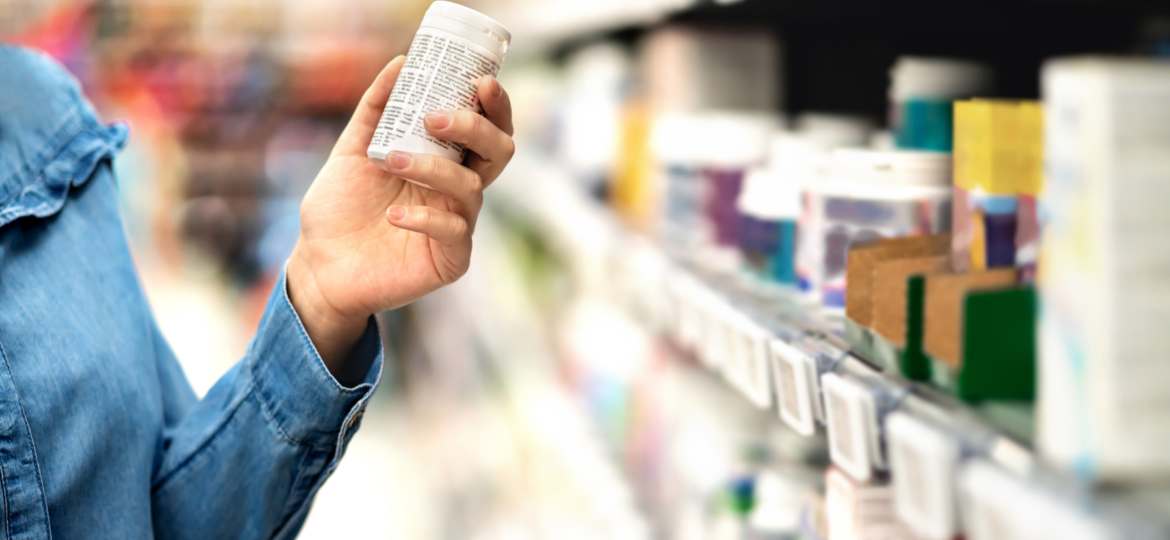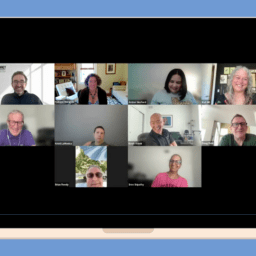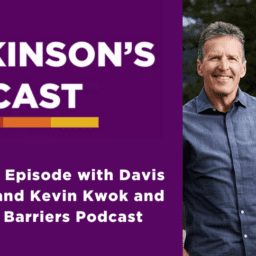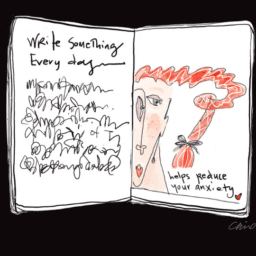The non-motor symptoms of Parkinson’s are vast and vary greatly from person to person, which means that treatment options are expansive as well.
In this episode
Dr. Aaron Haug gives a short overview of the most common non-motor symptoms and the primary medical and non-pharmacological options to treat them.
To download the transcript, click here.
Show Notes
- Not everyone with Parkinson’s will experience all non-motor symptoms, and the degree of symptoms will vary greatly person to person. Nonetheless, non-motor symptoms are manageable through medical and non-medical treatment options. Finding what works best for you can greatly improve your quality of life.
- Below is Dr. Haug’s brief overview of treatment options for the most common non-motor symptoms of Parkinson’s. To take a deeper dive into any one of these symptoms, be sure and visit our Non-Motor Symptoms Topic Page for more detailed information, as well as our new searchable Medication Guide.
- Constipation
- Non-Medical Treatment Options:
- Regular exercise
- Hydration
- Warm drink in the morning
- 30+ grams of fiber per day
- Probiotics
- Sugar-free gum
- Medical Treatment Options:
- Stool softeners (docusate)
- Laxatives (polyethylene glycol, Milk of Magnesia)
- Stimulant laxatives (bisacodyl, senna)
- Bisacodyl suppository
- Fleet Enema
- Prescription medications (linaclotide, lubiprostone, naloxegol)
- Non-Medical Treatment Options:
- Nausea
- Medical Treatment Options:
- Ondansetron
- Additional carbidopa
- Avoid Reglan, Compazine, and Phenergan
- Medical Treatment Options:
- Drooling
- Non-Medical Treatment Options:
- Sugar-free chewing gum or hard candy
- Medical Treatment Options:
- Prescription medications (glycopyrrolate)
- Atropine eye drops under the tongue
- Botulinum toxin injections
- Non-Medical Treatment Options:
- Overactive Bladder
- Medical Treatment Options:
- Anticholinergics (tolterodine, trospium, solifenacin, oxybutynin)
- Beta-3 Agonist (mirabegron)
- Medical Treatment Options:
- Neurogenic Orthostatic Hypotension (nOH)
- Non-Medical Treatment Options:
- Stand up slowly
- Compression stockings
- Stay hydrated
- Sodium rich foods such as pickles and peanuts
- Medical Treatment Options:
- Fludrocortisone
- Midodrine
- Droxidopa
- Pyridostigamine
- Non-Medical Treatment Options:
- Insomnia
- Non-Medical Treatment Options:
- Exercise during the day
- Light exposure during the day
- Relaxing bedtime routine
- No clock watching
- Get up, do something boring, and try again
- Consistent wake-up time, seven days a week
- Medical Treatment Options:
- Melatonin
- Clonazepam
- Sedating anti-depressants (trazedone, mirtazapine)
- Avoid diphenhydramine (Benadryl, Tylenol PM, Advil PM)
- Avoid Ambient and Lunesta
- Non-Medical Treatment Options:
- Daytime Sleepiness
- Non-Medical Treatment Options:
- Daytime naps
- Get a test for sleep apnea
- Caffeine early in the day
- Re-evaluate Parkinson’s medications
- Medical Treatment Options:
- Stimulant medications (methylphenidate, modafinil)
- Non-Medical Treatment Options:
- Restless Legs
- Medical Treatment Options:
- Dopamine agonists
- Levodopa
- Gabapentin
- Clonazepam
- Opiates for severe cases
- Medical Treatment Options:
- REM Behavior Disorder
- Non-Medical Treatment Options:
- Move sharp objects away from bed
- Pillows or mattress on floor next to bed
- Bed railing
- Separate beds for partners
- Medical Treatment Options:
- Melatonin
- Clonazepam
- Non-Medical Treatment Options:
- Depression
- Non-Medical Treatment Options:
- Cognitive Behavioral Therapy
- Exercise
- Others forms of therapy
- Medical Treatment Options:
- Dopamine agonists
- SSRIs (fluoxetine, sertraline, citalopram, escitalopram, paroxetine)
- Other prescriptions medications (buproprion, venlafaxine, duloxetine, trazodone, mirtazapine)
- Non-Medical Treatment Options:
- Anxiety
- Non-Medical Treatment Options:
- Exercise
- Talk therapy
- Meditation
- Medical Treatment Options:
- SSRIs (Prozac, Zoloft, Celexa, Paxil, Lexapro)
- Other prescription medicines (Wellbutrin, Effexor, Cymbalta, trazodone, mirtazapine)
- Clonazepam
- Non-Medical Treatment Options:
- Cognition (Mood and Thinking)
- Non-Medical Treatment Options:
- Physical activity
- Mental activity
- Social activity
- Reduce sedating medications
- Medical Treatment Options:
- Cholinesterase inhibitors (Rivastigmine, Donepezil)
- Memantine
- Non-Medical Treatment Options:
- Hallucinations
- Medical Treatment Options:
- Cholinesterase inhibitors (rivastigmine, donepezil)
- Antipsychotics (quetiapine, pimavanserin, clozapine)
- Avoid Haldol, Risperdal, Abilify, Zyprexa, Geodon
- Medical Treatment Options:
- Pain
- Non-Medical Treatment Options:
- Stretching
- Massage
- Warm baths
- Medical Treatment Options:
- Over-the-counter pain medications
- Nerve pain medicines (gabapentin, pregabalin)
- Botulinum toxin injections for dystonia
- Avoid narcotics if possible
- Non-Medical Treatment Options:
- Skin/Dandruff (Seborrheic dermatitis)
- Non-Medical Treatment Options:
- Sunlight exposure
- Antidandruff shampoos (selenium sulfide, pyrithione zinc, coal tar extract)
- Ketoconazole cream
- Hydrocortisone cream
- Non-Medical Treatment Options:
Explore more
For numerous additional resources on all non-motor symptoms of Parkinson’s, visit our Non-Motor Symptoms Topic page here. For our in-depth, searchable Parkinson’s Medication Guide, click here.
more about the speaker
Aaron Haug, MD, was born and raised in Kansas. He attended undergraduate at Creighton University and then earned his medical degree at the University of Kansas. He completed neurology residency as well as fellowship in movement disorders at the University of Colorado, including a year as Chief Resident. His medical interests include Parkinson’s disease, tremor, and other movement disorders, as well as deep brain stimulation (DBS) and botulinum toxin injections for the treatment of neurological conditions. Outside the office, he likes to spend time with his wife and kids, run, ski, and follow Colorado Rockies baseball.
Live Well Today Webinar Series Presenting Partners*
 *While the generous support of our sponsors makes our educational programs available, their donations do not influence Davis Phinney Foundation content, perspective, or speaker selection.
*While the generous support of our sponsors makes our educational programs available, their donations do not influence Davis Phinney Foundation content, perspective, or speaker selection.
Thanks for Listening!
To share your thoughts:
- Leave a note in the comment section below.
- Ask a question by emailing us here.
- Share this show on Facebook.
To help out the show:
- Leave an honest review on iTunes. Your ratings and reviews really help, and we read each one.
- Subscribe on iTunes.
Listen & Subscribe
Apple Podcasts | Stitcher
*The Third Season of the Parkinson’s Podcast is made possible through generous support in honor of Dr. Margaret Hilgartner.


















